
Best Low-Light Cactus & Succulents for Indoor Spaces
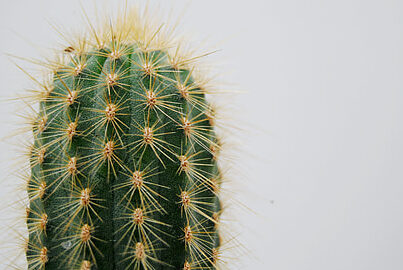
When it comes to indoor plants, cacti and succulents have gained immense popularity in recent years. Known for their unique shapes and ability to thrive in low-light conditions, these plants have become a favorite among plant enthusiasts and homeowners alike. However, finding the right cactus or succulent that can thrive indoors, especially in low-light environments, can be a challenge. That's why we have put together this guide to help you discover the best low-light cacti and succulents for indoor spaces.
We will explore a variety of cacti and succulents that are well-suited for low-light conditions. We will discuss their specific light requirements, growth habits, and care tips to ensure their successful growth indoors. Whether you have a windowless room or a shaded corner that needs some greenery, we have got you covered. By the end of this article, you will have a comprehensive list of low-light cacti and succulents to choose from, allowing you to create a stunning indoor garden that thrives in any lighting condition.
- Choose cacti and succulents that are known for thriving in low-light conditions
- Opt for varieties that have adapted to receive less sunlight, such as Haworthia or Sansevieria
- Place your indoor cacti and succulents near a window that receives indirect light
- Consider using artificial grow lights to provide the necessary light for your plants
- Rotate your cacti and succulents regularly to ensure even light distribution
- Avoid overwatering your low-light cacti and succulents, as they are more prone to root rot
- Use well-draining soil specifically formulated for cacti and succulents
- Keep your indoor space temperature consistent, as extreme fluctuations can stress the plants
- Consider using a humidifier to maintain the ideal humidity level for your indoor cacti and succulents
- Keep an eye out for signs of stress or pests, and address them promptly to ensure the health of your plants
- Frequently Asked Questions
Choose cacti and succulents that are known for thriving in low-light conditions
When it comes to choosing cacti and succulents for indoor spaces, it is important to consider their light requirements. While most of these plants are known for their ability to thrive in bright and sunny conditions, there are also some varieties that can tolerate low-light environments.
If you have a room in your home that doesn't receive much natural light, don't worry! There are several low-light cacti and succulents that can add a touch of greenery to your space. Here are some of the best options:
1. Snake Plant (Sansevieria)
Snake plants are excellent low-light houseplants that can adapt to a variety of conditions. They have long, upright leaves that are often variegated with shades of green and yellow. Snake plants are known for their ability to purify the air and are considered one of the best plants for improving indoor air quality.
2. Zebra Cactus (Haworthia attenuata)
The zebra cactus is a small succulent with thick, dark green leaves that are covered in white stripes. It is a slow-growing plant that can tolerate low-light conditions. Zebra cacti are also known for their unique rosette-shaped growth pattern, making them a visually appealing addition to your indoor garden.
3. Ponytail Palm (Beaucarnea recurvata)
Despite its name, the ponytail palm is not actually a palm tree, but a succulent. It has long, narrow leaves that cascade down from the top of the plant, resembling a ponytail. Ponytail palms can tolerate low-light conditions and are relatively easy to care for, making them a popular choice for indoor gardening.
 Exploring Succulents: Discovering Flower-Like Varieties
Exploring Succulents: Discovering Flower-Like Varieties4. Echeveria
Echeverias are a diverse group of succulents that come in a variety of shapes, sizes, and colors. They have rosette-shaped leaves that are often fleshy and have a waxy texture. Echeverias can tolerate low-light conditions, but they will need some bright, indirect light to maintain their vibrant colors.
5. Christmas Cactus (Schlumbergera)
The Christmas cactus is a popular holiday plant that blooms with colorful flowers during the winter months. It can tolerate low-light conditions and is relatively low-maintenance. Christmas cacti are known for their ability to adapt to different light levels, making them suitable for indoor environments with limited sunlight.
When selecting cacti and succulents for low-light conditions, it is important to remember that they still need some light to survive. Place them near a window or provide them with artificial grow lights to ensure they receive adequate light for their growth. Additionally, be careful not to overwater these plants, as they are prone to root rot in low-light environments.
With these low-light cacti and succulents, you can create a beautiful and thriving indoor garden, even in spaces with limited natural light. Enjoy the benefits of these low-maintenance plants while adding a touch of green to your home!
Opt for varieties that have adapted to receive less sunlight, such as Haworthia or Sansevieria
When it comes to choosing indoor plants, cacti and succulents are a popular choice. Not only are they low-maintenance, but they also add a unique touch of greenery to any indoor space. However, not all cacti and succulents thrive in low-light conditions. If you have a room with limited sunlight, it's important to choose varieties that have adapted to receive less sunlight.
Haworthia: One of the best options for low-light environments is the Haworthia. These small succulents are known for their rosette-shaped leaves and can tolerate low-light conditions. They are perfect for placing on a desk or shelf near a window where they can receive indirect sunlight.
Sansevieria: Another great option for low-light spaces is the Sansevieria, also known as the Snake Plant or Mother-in-Law's Tongue. This plant is incredibly resilient and can tolerate a wide range of lighting conditions, including low light. Its long, upright leaves have a striking appearance and can add a touch of elegance to any room.
A Guide to the Most Common Types of Succulents and Care TipsBoth Haworthia and Sansevieria are succulents that have adapted to thrive in arid environments with limited access to sunlight. They have developed mechanisms to store water in their leaves, allowing them to withstand periods of drought. These characteristics make them ideal choices for those looking to add some greenery to their indoor spaces with minimal maintenance.
When it comes to caring for these low-light cacti and succulents, it's important to remember that they still require some natural light. While they can tolerate low-light conditions, they will still benefit from receiving a few hours of indirect sunlight each day. Placing them near a window or in a well-lit room will ensure they continue to thrive.
Additionally, it's important to avoid overwatering these plants, as they are adapted to survive in arid conditions. Allow the soil to dry out completely between waterings and only water when the top inch of soil feels dry to the touch. This will help prevent root rot and keep your cacti and succulents healthy.
If you're looking to add some greenery to your low-light indoor spaces, consider opting for cacti and succulents that have adapted to thrive in these conditions. Haworthia and Sansevieria are excellent choices that can add beauty and charm to any room, while requiring minimal care and maintenance.
Place your indoor cacti and succulents near a window that receives indirect light
When it comes to growing cacti and succulents indoors, proper lighting is essential for their health and overall growth. While these plants are known for their ability to thrive in arid environments with plenty of sunlight, they can also adapt to indoor conditions with the right care.
One key factor to consider is the amount of light your indoor cacti and succulents receive. Although they do require sunlight, direct exposure to intense rays can actually harm them. Therefore, it's best to place your indoor plants near a window that receives indirect light throughout the day.
 Dormant Succulents: Which Varieties Hibernate in Winter?
Dormant Succulents: Which Varieties Hibernate in Winter?Indirect light refers to the sunlight that is filtered or diffused as it enters your home. This can occur when the window is covered with sheer curtains or when the plants are placed a few feet away from the window. By doing so, you can protect your cacti and succulents from the risk of sunburn or overheating.
It's important to note that different species of cacti and succulents have varying light requirements. Some can tolerate lower light conditions, while others prefer bright, indirect light. To ensure you're providing the ideal lighting conditions for your indoor plants, it's recommended to research the specific needs of each species you own.
Now, let's explore some of the best low-light cactus and succulent varieties that are suitable for indoor spaces:
1. Snake Plant (Sansevieria)
The Snake Plant, also known as Sansevieria or Mother-in-law's Tongue, is an excellent choice for indoor spaces with low-light conditions. This hardy succulent has long, upright leaves that come in various shades of green and yellow. It can tolerate a wide range of lighting conditions, including low light, making it an ideal choice for beginners or those with less sunny windows.
2. Zebra Cactus (Haworthia fasciata)
The Zebra Cactus, also known as Haworthia fasciata or Zebra Plant, is a visually striking succulent that thrives in low-light environments. It features thick, dark green leaves with distinct white stripes that resemble zebra patterns. This plant is known for its ability to tolerate low light and is perfect for adding a touch of uniqueness to your indoor plant collection.
3. Christmas Cactus (Schlumbergera)
The Christmas Cactus, known scientifically as Schlumbergera, is a popular choice for indoor plant enthusiasts. This succulent blooms during the holiday season, producing vibrant and colorful flowers. Although it prefers bright, indirect light, it can also thrive in low-light conditions, making it a versatile option for indoor spaces.
4. Ponytail Palm (Beaucarnea recurvata)
The Ponytail Palm, scientifically known as Beaucarnea recurvata, is an interesting succulent that can thrive in low-light settings. It features a unique bulbous base and long, thin leaves that resemble a ponytail. This plant can adapt well to various lighting conditions, including low light, making it a great addition to your indoor gardening.
 Diverse Native Succulents of Southern California
Diverse Native Succulents of Southern CaliforniaRemember, while these cacti and succulents can tolerate low-light conditions, they still need some natural light to grow and thrive. Regularly assess the lighting conditions of your indoor space and adjust accordingly to ensure your plants receive the optimal amount of light for their well-being.
Consider using artificial grow lights to provide the necessary light for your plants
When it comes to growing cacti and succulents indoors, lighting plays a crucial role in their overall health and growth. These plants thrive in bright light conditions, but not all indoor spaces can provide adequate natural light. That's where artificial grow lights come in.
Artificial grow lights are specially designed to provide the necessary spectrum and intensity of light that plants need for photosynthesis. They can be a great solution for indoor spaces with limited natural light or for those looking to create a dedicated plant-growing area.
There are different types of artificial grow lights available in the market, including fluorescent, LED, and high-intensity discharge (HID) lights. Each type has its own advantages and considerations, so it's important to choose the right one for your specific needs.
Fluorescent Lights
Fluorescent lights are one of the most popular choices for indoor gardening. They are energy-efficient, produce low heat, and come in various sizes and spectrums. When it comes to low-light cacti and succulents, fluorescent lights can provide enough brightness for their growth.
There are two main types of fluorescent lights: compact fluorescent lamps (CFLs) and T5 fluorescent tubes. CFLs are ideal for smaller spaces or individual plants, while T5 tubes are better suited for larger setups or growing multiple plants.
 Discover the Diverse Range of Shapes and Colors in Succulent Varieties
Discover the Diverse Range of Shapes and Colors in Succulent VarietiesLED Lights
LED lights have gained popularity in recent years due to their energy efficiency and long lifespan. They produce little heat and come in a wide range of spectrums, including options specifically designed for plant growth.
LED grow lights are available in different configurations, such as panels, bars, or bulbs. They can be customized to provide the specific light spectrum needed for cacti and succulents, promoting optimal growth and preventing stretching or etiolation.
HID Lights
HID lights are known for their high intensity and ability to penetrate deep into plant canopies. They are often used for larger indoor gardens or commercial setups. However, for low-light cacti and succulents, HID lights may produce too much heat and intensity, which can lead to sunburn or damage.
If you decide to use HID lights, it's essential to keep them at a safe distance from your plants and monitor the temperature and light intensity regularly.
Remember, when using artificial grow lights, it's crucial to provide the right amount of light and ensure the light is evenly distributed across your plants. Consider the specific light requirements of your cacti and succulents and adjust the light duration and intensity accordingly.
By using artificial grow lights, you can create an ideal environment for your low-light cacti and succulents, ensuring they receive the necessary light to thrive and grow beautifully indoors.
Rotate your cacti and succulents regularly to ensure even light distribution
 Vibrant Green and Red Succulents: Perfect for Your Garden
Vibrant Green and Red Succulents: Perfect for Your GardenWhen it comes to growing cacti and succulents indoors, one of the key factors to consider is their exposure to light. These plants thrive in bright, indirect light, but what about those low-light spaces in your home? Don't worry! There are still plenty of options for cacti and succulents that can thrive in low-light conditions.
One important tip to keep in mind is to rotate your cacti and succulents regularly. This will help ensure that all sides of the plant receive the same amount of light, preventing it from leaning or growing unevenly. By rotating your plants every few weeks, you can ensure even light distribution and maintain a healthy, balanced growth.
Best Low-Light Cacti
- Zebra Cactus (Haworthia fasciata): This small, low-growing cactus features distinctive white stripes that resemble a zebra's pattern. It is known for its ability to thrive in low-light conditions, making it an excellent choice for indoor spaces.
- Easter Cactus (Rhipsalidopsis): Also known as Spring Cactus, this variety is a popular choice for its vibrant, showy blooms. It can tolerate low-light conditions and is relatively easy to care for, making it a great addition to any indoor collection.
- Christmas Cactus (Schlumbergera): With its beautiful cascading stems and colorful flowers, the Christmas Cactus is a favorite among plant enthusiasts. It can tolerate low-light conditions and can even bloom during the holiday season, adding a festive touch to your indoor space.
Best Low-Light Succulents
- Sansevieria (Snake Plant): This popular succulent is known for its striking, upright leaves that come in various shades of green. It can easily adapt to low-light conditions, making it an ideal choice for beginners or those with less sunny spaces.
- Haworthia: With its rosette-shaped leaves and intricate patterns, Haworthia is a visually appealing succulent that can tolerate low-light conditions. It is a great choice for terrariums or as a desktop companion.
- Peperomia: This diverse genus of succulents offers a range of textures and colors, perfect for adding interest to your indoor garden. Peperomia varieties, such as the Watermelon Peperomia or the Ripple Peperomia, can thrive in low-light environments.
Remember, while these cacti and succulents can tolerate low-light conditions, it's important to strike a balance. They still need some light to thrive, so be sure to place them near a window or provide artificial light if necessary. With the right care and attention, you can enjoy the beauty of these low-light cacti and succulents in your indoor spaces.
Avoid overwatering your low-light cacti and succulents, as they are more prone to root rot
When it comes to caring for low-light cacti and succulents, one crucial aspect to keep in mind is to avoid overwatering. These plants thrive in arid environments, and excess moisture can lead to root rot, which can be detrimental to their health. Therefore, it is important to establish a proper watering routine and be mindful of the moisture levels in the soil.
Here are some low-light cacti and succulents that are well-suited for indoor spaces:
1. Snake Plant (Sansevieria trifasciata)
This resilient plant is known for its tall, upright leaves that feature a striking pattern. Snake plants are incredibly tolerant of low-light conditions and can even survive in rooms with just fluorescent lighting. They require minimal watering and are perfect for those who tend to forget to water their plants regularly.
2. Zebra Haworthia (Haworthia fasciata)
The Zebra Haworthia is a small succulent that thrives in low-light environments. With its white stripes and rosette shape, it adds a unique touch to any indoor space. This plant is drought-tolerant and only requires occasional watering. It is an ideal choice for those who are new to plant care or have limited access to natural light.
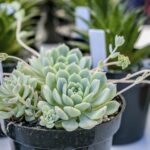 Cascading Succulents: A Guide to Long and Trailing Varieties
Cascading Succulents: A Guide to Long and Trailing Varieties3. Christmas Cactus (Schlumbergera spp.)
The Christmas Cactus is a popular choice for indoor gardening due to its vibrant flowers that bloom during the holiday season. It can tolerate low-light conditions, making it suitable for rooms that receive indirect sunlight. This cactus prefers well-draining soil and requires watering when the top inch of the soil is dry.
4. Jade Plant (Crassula ovata)
The Jade Plant is a classic succulent that is beloved for its fleshy, oval-shaped leaves. It can tolerate low-light conditions, but it does appreciate some sunlight, so placing it near a window is ideal. Jade plants prefer dry conditions, so be sure to let the soil dry out between waterings.
Remember that even though these cacti and succulents are more tolerant of low-light conditions, they still need some light to thrive. It is essential to find a balance by providing them with enough light without subjecting them to direct sun exposure, which can lead to sunburn or heat stress.
By selecting the right low-light cacti and succulents for your indoor spaces and implementing proper care techniques, you can enjoy the beauty and benefits of these plants even in areas with limited natural light.
Use well-draining soil specifically formulated for cacti and succulents
If you want to successfully grow cacti and succulents in low-light indoor spaces, it's crucial to use well-draining soil specifically formulated for these types of plants. The unique soil composition allows excess water to quickly drain away, preventing root rot and other moisture-related issues.
Why is well-draining soil important?
Well-draining soil is essential for cacti and succulents because they are adapted to survive in arid environments with minimal rainfall. These plants have evolved to store water in their leaves, stems, and roots, enabling them to endure prolonged periods of drought. However, if these plants are exposed to excessive moisture or remain in constantly damp soil, their delicate roots can become susceptible to rot and fungal diseases.
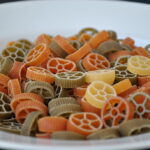 Discover the Most Vibrant and Unique Tri Color Succulent Varieties
Discover the Most Vibrant and Unique Tri Color Succulent VarietiesWell-draining soil ensures that water passes through it quickly, preventing the roots from sitting in stagnant water. It allows the plants to take up the necessary moisture they need for survival while also allowing the excess water to escape.
Choosing the right soil for cacti and succulents
When selecting soil for your low-light cacti and succulents, opt for a specialized cactus and succulent mix that is readily available at garden centers or can be made at home. These mixes are typically composed of a combination of ingredients such as regular potting soil, sand, perlite, and pumice. The added components help create a well-draining environment that mimics the natural habitat of these plants.
Perlite is a common ingredient in cactus and succulent soil mixes. It is a lightweight volcanic glass that improves drainage and aeration while also preventing soil compaction. Pumice, which is a type of volcanic rock, has similar benefits and can be used as an alternative to perlite.
Additionally, sand is often included in cactus and succulent mixes to enhance drainage. It helps create larger spaces between soil particles, allowing water to flow through more easily. However, it's important to use coarse sand rather than fine sand, as fine sand can lead to compacted soil.
Remember, the goal is to create a soil mix that is well-draining but still retains some moisture. Finding the right balance is key to the successful growth of your low-light cacti and succulents.
Keep your indoor space temperature consistent, as extreme fluctuations can stress the plants
When it comes to decorating your indoor space with cacti and succulents, it's important to choose the right plants that can thrive in low-light conditions. One crucial factor to consider is the temperature inside your home or office. These plants prefer a consistent temperature, so it's essential to avoid exposing them to extreme fluctuations, which can cause stress and potential damage.
 The Prolific Succulent World: A Guide to its 'Mother of Many' Species
The Prolific Succulent World: A Guide to its 'Mother of Many' SpeciesConsider using a humidifier to maintain the ideal humidity level for your indoor cacti and succulents
When it comes to creating a thriving indoor cactus and succulent garden, maintaining the ideal humidity level is crucial. These desert-dwelling plants require low humidity levels to thrive, mimicking their natural habitat. However, indoor environments often have dry air, especially during the winter months when heating systems are in use. This can lead to problems like leaf browning, wilting, and overall poor health of your beloved plants.
One effective solution to combat dry indoor air is to use a humidifier. This device increases the moisture content in the air, creating a more suitable environment for your cacti and succulents. By maintaining the ideal humidity level, you can ensure that your plants stay healthy and vibrant all year round.
Benefits of using a humidifier for your indoor cacti and succulents
Using a humidifier offers several benefits for your indoor cacti and succulents:
- Prevents leaf dehydration: Cacti and succulents store water in their leaves, stems, and roots to survive in arid conditions. Dry indoor air can cause rapid moisture loss, leading to dehydrated leaves. A humidifier helps counteract this by increasing the moisture content in the air, preventing leaf dehydration.
- Reduces the risk of pests: Low humidity levels make your cacti and succulents more susceptible to pest infestations. Spider mites, mealybugs, and scale insects thrive in dry environments. By using a humidifier, you create a less favorable environment for these pests, reducing the risk of infestations.
- Promotes optimal growth and blooming: Cacti and succulents need the right balance of moisture and dryness to thrive. Maintaining the ideal humidity level with a humidifier ensures that your plants receive the necessary conditions for growth and blooming. This is especially important for flowering succulents, as proper humidity levels can enhance their blooming potential.
- Improves overall air quality: Humidifiers not only benefit your plants but also improve the air quality in your indoor space. Dry air can lead to respiratory problems, dry skin, and irritated nasal passages. By adding moisture to the air, a humidifier helps alleviate these issues and creates a more comfortable environment for you and your plants.
Choosing the right humidifier for your indoor cacti and succulents
When selecting a humidifier for your indoor cacti and succulents, consider the size of your space and the specific needs of your plants. Here are a few factors to keep in mind:
- Capacity: Choose a humidifier with a capacity suitable for the size of your room. Larger rooms may require a humidifier with a higher water tank capacity to ensure consistent humidity levels.
- Adjustable settings: Look for a humidifier with adjustable settings to control the humidity level according to your plants' requirements. Some humidifiers offer different modes, such as low, medium, and high, allowing you to customize the moisture output.
- Easy maintenance: Opt for a humidifier that is easy to clean and maintain to ensure its longevity. Regular cleaning prevents the buildup of mold and bacteria, which can be harmful to both your plants and your health.
- Noise level: Consider the noise level of the humidifier, especially if you plan to use it in your bedroom or workspace. Look for models that operate quietly, ensuring a peaceful environment.
- Additional features: Some humidifiers come with additional features, such as built-in timers or automatic shut-off when the water tank is empty. These features can offer convenience and peace of mind.
By choosing the right humidifier and maintaining the ideal humidity level, you can provide your indoor cacti and succulents with the optimal growing conditions they need to thrive. Remember to monitor the humidity levels regularly and adjust the settings accordingly to ensure the best care for your desert plants.
Keep an eye out for signs of stress or pests, and address them promptly to ensure the health of your plants
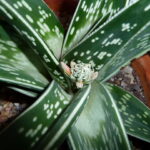 Guide to Aloe Family Diversity: Types of Succulents
Guide to Aloe Family Diversity: Types of SucculentsWhen it comes to choosing indoor plants, cacti and succulents are popular choices due to their low-maintenance nature and unique aesthetic appeal. However, not all cacti and succulents thrive in low-light conditions. If you're looking to add some greenery to a room with limited sunlight, it's essential to choose the right varieties that can withstand such conditions.
Factors to Consider for Low-Light Conditions
Before diving into the best low-light cacti and succulents, it's crucial to understand the factors that contribute to their survival in such conditions. While these plants are known for their ability to tolerate drought and bright sunlight, low-light environments require some specific adaptation.
- Light Intensity: Low-light conditions typically refer to areas with limited exposure to natural sunlight. This could be due to small windows, north-facing rooms, or spaces that are shaded by nearby buildings or trees.
- Duration of Light: Even if your indoor space receives limited sunlight, it's essential to consider the duration of that light exposure. Cacti and succulents generally require at least a few hours of indirect sunlight to thrive.
- Light Quality: The quality of light, specifically the spectrum, is another crucial factor. While cacti and succulents can tolerate low-light conditions, they still require some level of blue and red light wavelengths to carry out photosynthesis effectively.
Best Low-Light Cacti and Succulents
Now that you understand the challenges of low-light conditions, let's explore some cacti and succulents that can adapt well in such environments:
- Sansevieria Trifasciata (Snake Plant): Known for its air-purifying properties, the snake plant can tolerate low-light conditions. It features upright, sword-shaped leaves with yellow or green variegation, adding a touch of elegance to any room.
- Zamioculcas Zamiifolia (ZZ Plant): The ZZ plant is renowned for its ability to thrive in low-light environments, making it a popular choice for indoor spaces. It has glossy, dark green leaves that grow in an attractive feather-like pattern.
- Epiphyllum Anguliger (Fishbone Cactus): This unique cactus has long, flat stems that resemble fishbones, hence its name. It can tolerate low-light conditions and produces stunning white or pink flowers that bloom at night.
- Haworthia Fasciata (Zebra Plant): The zebra plant is a small succulent with distinctive white, raised stripes on its dark green leaves. It can adapt well to low-light conditions and requires minimal watering, making it an excellent choice for beginners.
- Gasteria Species (Gasteria): Gasteria plants are known for their thick, fleshy leaves arranged in a rosette. They can handle low-light conditions and are relatively forgiving when it comes to watering.
Remember, even though these cacti and succulents are more tolerant of low-light conditions, it's still crucial to provide them with some indirect sunlight whenever possible. Keep an eye out for signs of stress or pests, and address them promptly to ensure the health of your plants.
Frequently Asked Questions
1. Can cactus and succulents survive in low-light indoor spaces?
Yes, there are several varieties of cactus and succulents that can thrive in low-light conditions.
2. What are some low-light cactus options for indoor spaces?
Some low-light cactus options include the Zebra Cactus, Christmas Cactus, and Snake Plant.
3. Which succulents can tolerate low-light conditions?
Succulents like the Haworthia, Aloe Vera, and Ponytail Palm can tolerate low-light indoor environments.
4. How can I care for low-light cactus and succulents?
It's important to place them near a window with indirect sunlight, water them sparingly, and make sure they have well-draining soil.
If you want to read more articles similar to Best Low-Light Cactus & Succulents for Indoor Spaces, you can visit the Varieties and Colors category.


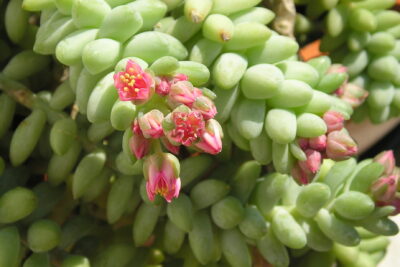



You Must Read